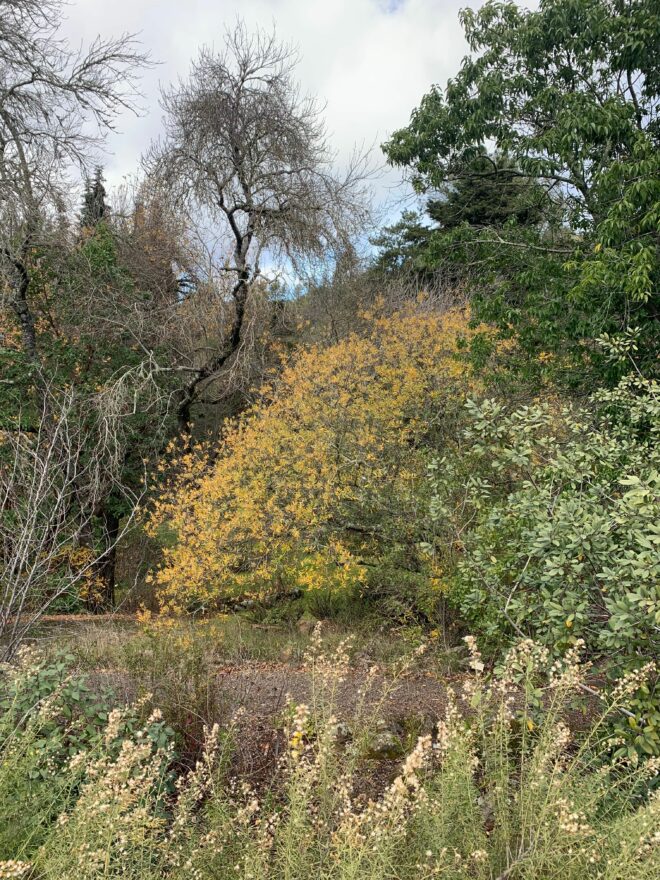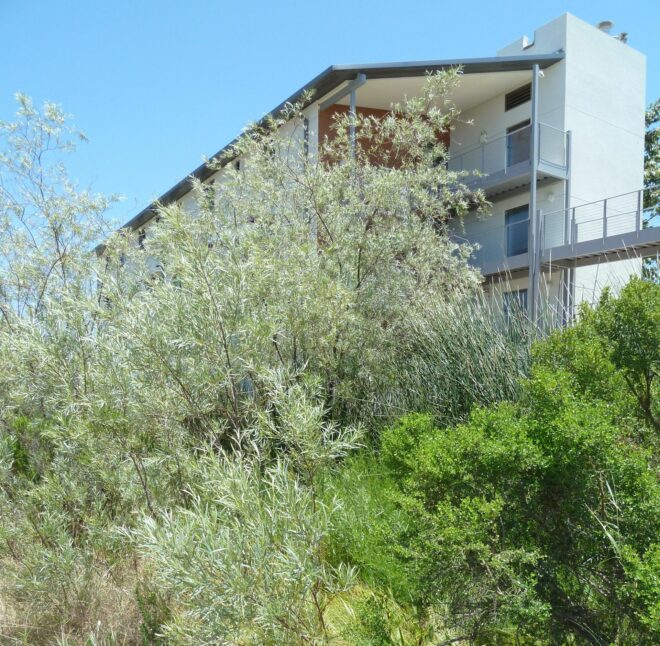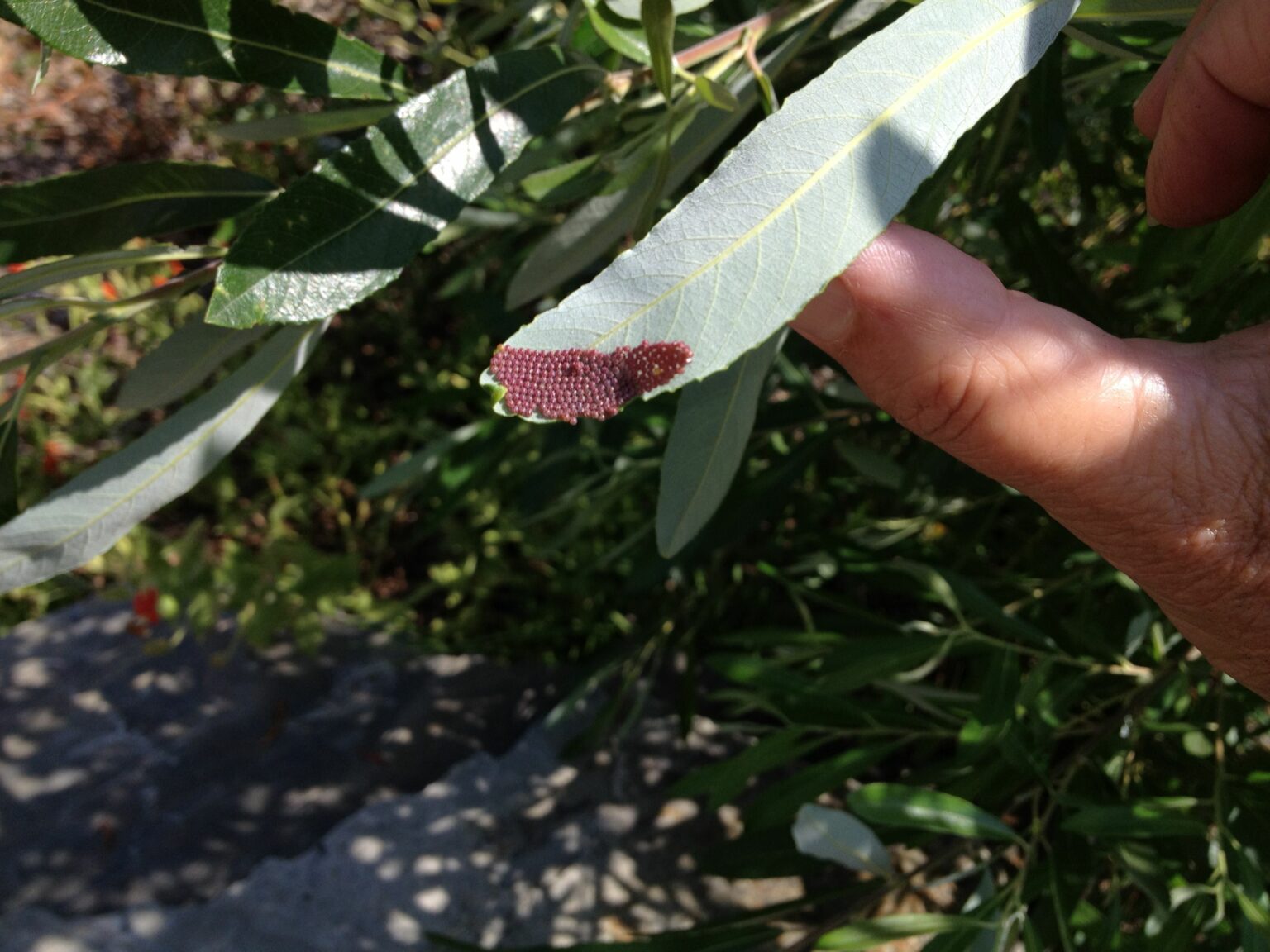
California Native Plants for the Garden: Bonus Profiles – Part 2

Contributor
- Topics: Plants You Need
Fall 2023
Originally published in 2005, the highly regarded California Native Plants for the Garden is now in its 11th printing. While writing the book, authors Dave Fross, Bart O’Brien, and Carol Bornstein had a tough time deciding which plants to include in this award-winning reference. Some personal favorites ended up on the cutting room floor due to space constraints and, to celebrate this new printing, they have revised and updated three of those profiles for online viewing only. Pacific Horticulture is delighted to publish them.
This is the second in a three-part series.
Salix species
Willows
Willow Family (Salicaceae)
Plant Type: Deciduous shrubs and small trees.
Geographic Zones: All.
Light: Sun to shade.
Soil: Adaptable, water retentive preferred.
Water: Regular to moderate.
Natural Habitat and Range: Along watercourses; throughout California.


Willows and water. Whether rushing streams, marshy deltas, meandering rivers, or hidden springs, wherever fresh water is found willows will be there. Beginning in alpine seeps above 10,000 feet, they follow the rivers in long ribbons of summer green through canyons and valleys, across dry fields, as if one with the water. In diverse woodland associations, as solitary individuals, or in single species thickets, willows promise an abundance of wildlife and a wealth of birdsong.
Fast growing, willows usually have shrubby habits with multiple stems rising from the base. The limber stems may be red, yellow, silver, amber or orange-brown with narrow leaves, 1 to 4 inches long. Flowers are held in elongated catkins – male and female flowers borne on separate plants – and in late winter add a distinctive ornamental quality in the bud stage. These buds mimic the classic “pussy willows” sold by florists in early spring. Female plants produce a copious supply of winged seeds with fluffy hairs that are considered “messy” by some.
Willows are useful along watercourses, in retention basins to stabilize banks and as wildlife habitat. They can be coppiced regularly to control their growth and create a strong vertical form and a few species can develop into handsome trees. Salix species are cultivated by native people for myriad cultural products: the bark for fever remedies, coppiced plants to produce straight young stems that are used as a foundation element in basketry, cages and traps, and the infusion of leaves for sore throats and colds. Many species offer yellow or gold autumn leaves and the shiny young winter stems adds seasonal interest.
Care should be taken when used in urban areas as many species will quickly overwhelm a typical suburban garden and the roots will aggressively seek a water source. Caution should also be taken to keep willows away from water lines, sewers, and septic systems. Aphids, scale, and mealybug are common pests and often followed by sooty mold. Wood-boring beetles cause structural damage and may also spread fungal pathogens. Monitoring the plantings and using horticultural soaps and oils will help prevent heavy infestations, but remember that birds are feeding on these insects and willows are an important food resource for butterfly and moth larvae.

Slender leaf willow, Salix exigua, is a shrub to small tree 10 to 15 feet tall with narrow, 2-to-3inch leaves that have silken-white undersides. Against the dark green upper leaf surface (some forms are silver-blue on both sides) they add an appealing glint in the wind. Goodding’s black willow, Salix gooddingii, is a tree to 50 feet or more with yellow stems and gray green leaves. It has a rounded, upright habit with rough, dark brown bark and is easily the largest of California’s willows. Red willow, Salix laevigata, has amber winter stems and blue-green leaves with a silver-gray underside. It commonly grows to 25 feet tall and occasionally to as much as 50 feet with an equal spread. Arroyo willow, Salix lasiolepis, is a highly variable tree or shrub commonly planted in restoration projects.
California Native Plants for the Garden is now in its 11th printing available at Native Sons Nursery.
This article is sponsored by: Western Horticultural Society










Responses